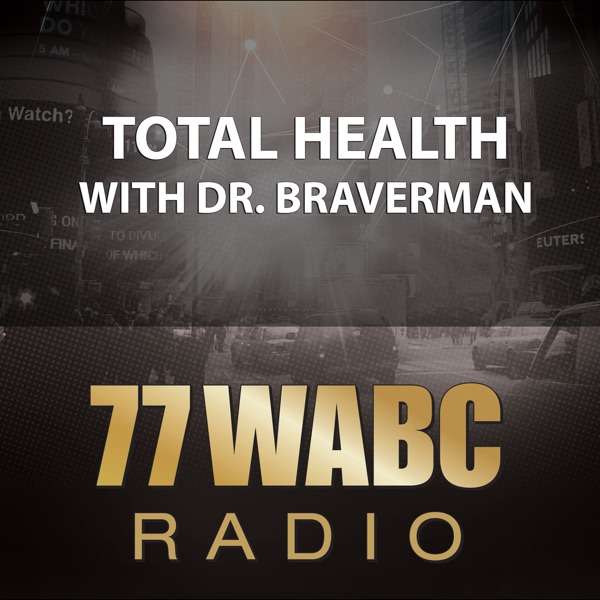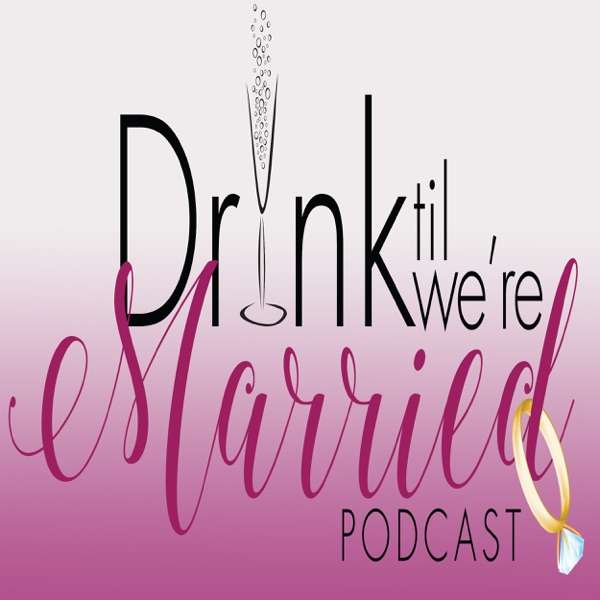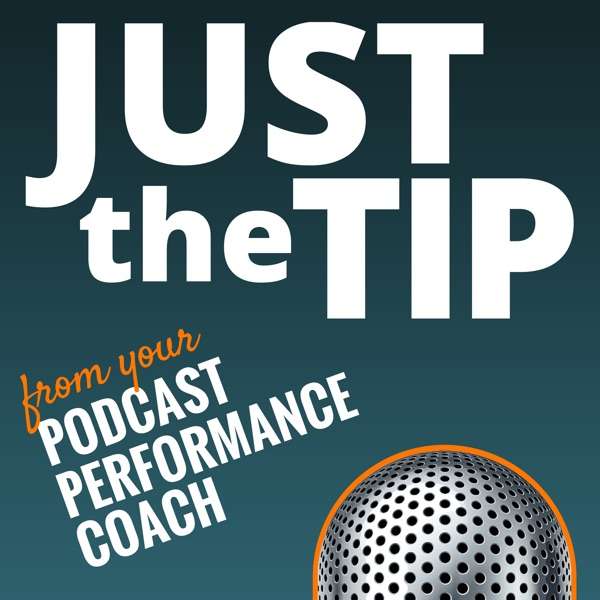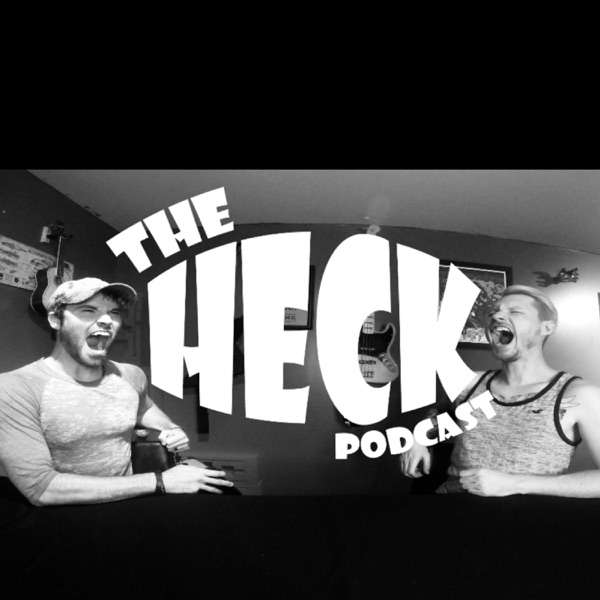You don’t need to look far to find a heated debate or surprising statistic about video in podcasting right now.
Video is killing podcasts! Video is saving podcasting! If you’re not doing video, what’s the point? It’s a lot.
Regardless of which side of the fence you sit on, there’s one thing I’m sure we can all agree on: Every show is different, and adding video unnecessarily could kill your podcast.
So rather than continuously examining contradictory data or choosing which hill to die on, I spoke to some podcasters about their real-life experiences adding video to their workflow and the results (and challenges) it can bring.
Darren Lake/ DLake
Host of the 1% Better Runner podcast
“Video is three times harder, but worth the effort”
Darren Lake, otherwise known as DLake, never actually set out to be a podcaster. He just wanted to create a platform where he could explore “weird content” about running.
In the first three years, he produced about 40 audio-only episodes. But despite trying “every trick in the book” to grow his audio podcast, it struggled to gain traction: “I couldn’t crack the [running] niche, for whatever reason. Maybe I was too late.”
Adding a video component became a no-brainer. For one thing, running is a subject that has a lot more impact when visuals are included. His listeners repeatedly told him, “You should be on YouTube,” and “You have the perfect style for YouTube.” It also helped that Darren already had a lot of experience in front of the camera from his days as a music artist. It felt like “a very natural transition” for him.
He began experimenting with video in 2021 but didn’t immediately publish any content. Instead, he accumulated a backlog of 25 videos, which he then released all at once in 2023. The impact of this strategy was fast and transformative.
The “YouTube algorithm is beautiful.”
Within 18 months of adding video, he gained 3.5 times the audience he had built in 6 years with audio-only content. He told me his content regularly performs 10-100 times better on video platforms than audio-only, with one particular video alone earning him 1,000 YouTube subscribers.
Since posting regular short videos twice weekly, he gains approximately 100 new streams per month on Spotify too. “When people know you have a YouTube, they’ll go to your podcast, they’ll go to Spotify, they’ll go to your Instagram“—but rarely, he says, the other way around.
Lake discovered that YouTube offers tremendous leverage: “I put in a little bit extra work for video, and I get 10, 20X, a hundred [views in return].”
It’s worth noting that Darren’s video content is quite different from his audio-only; he adapts it heavily for YouTube so he can optimize for visual audiences. So instead of simply filming his long-form podcast sessions, he totally repurposes his content for a YouTube audience.
Here’s how he does it:
- He shortens episodes to 10-15 minutes
- Adopts an “explainer style” format, talking directly to camera
- Implements scripting to make content more focused
- Optimizes topics based on YouTube search trends – “pillar content that people are searching for”
While he acknowledges that “video is three times harder” than audio, for him, the return on investment justifies the effort.
Lake’s financial investment in YouTube has been relatively modest—approximately $500 in total.
2. John Kundtz
Host of The Disruptor podcast
“To produce a successful video podcast, you need to either outsource post-production or take the time to learn how to edit videos effectively.”
When John Kudtz launched The Disruptor podcast, he recorded both video and audio from day one. “I recorded the shows in video and audio. Then, during post-production, I would publish either the audio-only or video podcast,” he told me.
He did this because he’d been hearing a lot about the benefits of YouTube for growth and monetization: “I heard that YouTube was an easier platform to monetize and that the reach could potentially be greater because of the search nature and the algorithms of YouTube.”
Video investment challenges
But publishing a video component to his podcast wasn’t as straightforward as he’d hoped. John quickly discovered the hidden complexities of video podcasting, including:
- Time investment: “I examined how much time I was spending on pre-production compared to post-production. [Video editing] led to a significant cost in terms of my time.”
- Technical hurdles: “I’m not a video engineer and found video editing quite time-consuming and not enjoyable.”
- Cost: Eventually, John hired someone to handle the post-production video editing and creating thumbnails, costing him around $300 to $400 per show for a one-hour episode.
After publishing eight video podcasts, John reevaluated his workflow and pulled back to publishing audio-only, re-platforming his show to Buzzsprout. “My video podcasts weren’t gaining much traction,” he says, “so I couldn’t justify continuing the investment of time and money into post-production and editing.”
Since going audio-only, his production output has increased substantially. He’s currently sitting at 33 episodes.
He says he owes a lot of his audio podcast production to modern tools – especially AI. “With tools like Descript, I can edit an audio podcast extremely quickly, upload it to Buzzsprout, use the AI tools in both the Descript and Buzzsprout to create show notes, and then stage and release the show – usually within a couple of hours after recording.” This sort of workflow simply isn’t possible when video is involved.
Doing what makes sense for your podcast
John says he’s happy he tested the water with video, but made the pragmatic business decision to pivot back to audio as video just didn’t make sense. It’s also worth noting that, as a business podcast, John’s primary goal isn’t growth: “My strategy isn’t to drive views, downloads, or engagement. It’s a marketing and branding exercise. I primarily use it to promote my business one-on-one.”
John Kudtz’s journey is a masterclass in adaptability. His most significant insight? “The biggest lesson I learned is that to produce a high-quality video podcast, you either need to outsource the post-production work or take the time to learn how to edit videos effectively.”
dCarrie
Host of the Travel n Sh!t podcast
“It’s absolutely been worth it.”
dCarrie is the host of the Travel n Sh!t podcast. Her journey into video podcasting was born from a ‘why not?’ approach.
After 53 episodes of audio-only content, D saw video as a natural extension of her podcasting workflow. “It felt easy to add!” she says, “All I’d have to do was add a camera and upload the footage.“
But she had one major advantage: She already had a free video editor on board. “I generally ‘employ’ an editor [conveniently, her fiancé!], and I don’t do much editing to my audio as is, so there weren’t too many extra steps to getting the extra content,” she says. Therefore, all the common technical barriers podcasters experience shifting to video were minimal.
But adding video wasn’t just about pressing ‘record’ and letting her fiancé do the rest. D invested time and resources into creating a quality recording space. “Setup does take effort,” she admits. “Getting lighting in order, and occasionally updating my recording set are things that I have spent time and money on. I love my recording space though, so it’s absolutely been worth it.“
Unexpected benefits of video
For D, the best part about adding video to her podcast wasn’t seeing growth in her analytics, but something more fundamental: engagement with her listeners.
“Unfortunately, no“, she laughs when I ask about tracking data, “I don’t really monitor any of that. I will say, though, that my video episodes are the only places where I see any comments.”
“I actually receive likes and comments on the YouTube content, but not the audio.”
Like many of the podcasters I spoke to, D also finds that bringing video into her interview episodes makes the whole experience more engaging and enjoyable: “I enjoy being able to see the faces of the people I’m talking to. It gives me a sense of how the convo is going and how or when to shift the discussion.”
4. Matty Lansdown
Host of the How to Not Get Sick and Die podcast
“Audio, I could do any time of the day… whereas with video, I feel like you’ve got to put a lot more thought into it.”
When Matty Lansdown’s podcast hit a download plateau, he knew something had to change. Over the years, he’d established a loyal following, but growth had stagnated. “I hit a ceiling,” he said. “I bounce somewhere between 19,000 and 24,000 every single month with audio only.”
At episode 230, Matty made the bold decision to introduce a video component to his podcast. The primary driver was the post-pandemic podcast listening dip: “I moved to video in an attempt to reach more people, realizing that COVID stopped a lot of people driving to work, listening to podcasts in cars and on trains as regularly as they were before.“
Two years and 200 video episodes later, Matty admits he’s a bit underwhelmed by the results: “To be honest, from the data, it’s pretty uninspiring.” His YouTube channel has 800 subscribers, with 5,000 to 7,000 YouTube views per month. Decent, but not yet as transformative as he’d hoped.
Biggest learning? Video and audio are very different
Video podcasting proved to be far more resource-intensive than Matty initially anticipated. “The most time and most money that I spend is on video editors,” he explains. Where an audio podcast might take around 4 hours for him to produce, video editing( especially creating shorts) became a much more complex process.
Matty’s biggest learning has been that video and audio are very different, and if you’re doing video you need to spend a lot of time and effort making it engaging.
“You have to create engaging content just like you do with the audio podcast because otherwise, nobody will watch it,” he says. “Audio, I could do any time of the day… whereas with video, I feel like you’ve got to put a lot more thought into the visual aspect.” From lighting to wardrobe, video just simply demands more.
But despite the underwhelming returns so far, Matty is optimistic about the future of his video content: “My experience in business is that, at some point, there’s an exponential kick with the data, and then it’s like, oh, all of that work paid off.”
5. Joe Casabona
Host of the Streamlined Solopreneur podcast
“As podcasters, we’re content creators, and creating content is a constant experiment.“
Joe Casabona is a podcast coach who’s been running his own show for over nine years. In the summer of 2024, Joe tried adding a video component to his long-running audio podcast when he noticed a dip in his download numbers: “For the last year or so, my downloads have been down. Anecdotally, it sounds like a lot of podcasters’ downloads have been down.”
As both a podcast coach and longtime content creator, Joe felt responsible to adapt: “The podcast landscape is changing, and as a podcast coach, and a longtime podcaster, I think it’s incumbent upon myself to try different things.”
“Creating content is a constant experiment,” he says, “Just like you need to get your car inspected and you need to change your oil and rotate your tires. You can’t just start a podcast, do it one way, and then never think about it again.”
After producing approximately 430 audio-only episodes, Joe began incorporating video last year. Adding video wasn’t logistically difficult because he was already using tools to record his show that supported video. His editor had also added video editing to their services, so he didn’t have to look for production either.
The “communal impact” of adding video
Six months in, Joe hasn’t seen significant growth in audience numbers yet: “Compared to other platforms, I’m not seeing an appreciable bump.” However, it’s still early days, and traction takes time: “Experiments take time, and you can’t just put out one video, and it fails and be like, ‘well, video doesn’t work.‘”
He also believes the slow traction is mostly down to his established audience habits: “Because I’ve been around so long, most of my listeners are on Apple Podcasts.”
Like other podcasters I spoke to, where Joe has seen change is in audience trust, interaction and feedback. “People see me, and they’re more likely to trust me,” he says, and this translates to increased feedback: “On these video platforms, I see more engagement because it’s easier. I have polls on Spotify, and I get answers to those polls….[it’s] way more than I get with audio… I think there’s a more communal impact to having a video component.“
The cost of adding video
Adding video has been surprisingly manageable for him from a time perspective. Since Joe was already recording with video-capable tools, he reports, “From a time perspective, no extra time.”
The financial aspect does require some investment, though. Adding video editing to his editor’s invoice has cost him an additional 30%, but Joe says, “It’s worth it for this experiment and for having a presence on YouTube and Spotify.”
Another big bonus of adding video is that Joe’s found himself more engaged as an interviewer: “I would say it probably makes me more engaged… because I want to appear as if I’m engaged, and so I’m not checking my email or writing stuff down while my guest is speaking. I’m looking at my guest and into the camera.”
Key Lessons from Video Podcasters
When researching this article, I spoke to a whole bunch of other podcasters who had also experimented with adding a video component to their show.
Here’s just some of the great advice they shared for their fellow creators:
Don’t stop publishing audio
Remember that although YouTube has a lot of viral potential, as a platform, it can be incredibly fickle. Cal Newport recently referred to YouTube as the “Wild West” on an episode of the Deep Questions podcast: “Change one word, and 10,000 less people will watch it. It’s crazy.”
His producer and co-host, Jesse, also pointed out the dangers of focusing too heavily on one platform: “If you’re just a full-time YouTuber and your channel gets cancelled, what are you gonna do then?”
All of the podcasters I spoke to were keen to keep their audio podcast alive as well as video. Andrea Jones from the The Mindful Marketing Podcast told me that, despite her success with video, if she were to start another podcast tomorrow, she would “start again with audio-only until it built up a listenership that I could expand to other platforms.”
Go with what plays to your strengths
Regardless of hype, it’s important to stick to the format that aligns with your skills, resources and goals. Podcasters have never been big trend-followers, and now’s not the time to change that.
Video can take a lot of extra time, money and effort, so the worst thing you can do is jump into doing it if you don’t want to, or don’t realistically have the resources to make it work. And, of course, the podcasters who have success with video are those who actually enjoy being in front of the camera – it’s not for everyone, and that’s OK! It doesn’t make you a bad podcaster if you don’t want to turn the camera on.
Remember, some formats translate better to video than others
Turning a solo show into a video podcast would potentially be harder than an interview format show.
Kathi Kamleitner from the Watch Me See podcast decided to stop doing video after a 12-episode stint because it was a lot of work due to it being a solo show: “I found it challenging to create engaging visual content for my podcast, which is primarily a scripted, narrative, solo show. It took time and money to pay my VA to help with the creation of the videos, but overall the takeup in terms of traffic was really minimal.“
Interview podcasts, on the other hand, translate more easily to video. Many podcasters prefer to use video platforms when interviewing remote guests anyway, meaning it’s just a matter of uploading the video file to a new platform. When you compare this to DLake’s strategy of completely reworking every episode to suit audio or video, it’s clear that the format of your show can make a big difference in terms of how much work needs to go into creating video.
Mielien from the Moving To Oneness podcast started off with video from day one because she had a co-host who lived on another continent: “I had a co-host the first 4 or 5 episodes, who was in the US. I’m in Germany, so we started this way. I learned that it was much easier to use Zoom than any other audio podcast softwares at that time.”
Other hosts I spoke to agreed that remote interview formats translate perfectly to video and even make interviews a better experience for everyone: “I like to have video just so I can see the other person and have more of a natural and organic response to the things that they’re saying,” Andrea Jones told me.
You don’t have to publish full episodes to use video platforms
A while ago, we ran a survey that showed the vast majority of podcasters were using video platforms like YouTube, TikTok and Instagram without committing to full video episodes of their podcasts. 61% were posting static images or audiograms to get their audio files on YouTube, and 16% were publishing short video clips to promote their shows on social media.
This is how Andrea Jones was first motivated to make video podcasts. She began just posting audiograms of her show, and heard from new listeners that was where she was being discovered: “when I started putting just the audio streams on YouTube, people said they found it through YouTube, but then they would go listen in their preferred app of choice, so I knew I was onto something.“
Many podcasters I spoke to told me how effective video clips have been for promoting their podcast (whether that was a video or audio-only show).
Alana from She Well Read said: “Video definitely helped with cross-promotion on social media for sure. We could see a direct correlation of when an episode had a spike in downloads from one of its clips gaining traction.”
Experiment until you find what works
To close, then, here’s some great advice from Dlake:
“Just because people aren’t listening or watching… doesn’t mean it’s bad. It just means you haven’t found either a combination of the right style with the right audience and the right platform. It’s like a puzzle piece… put out a bunch, iterate, iterate, iterate.”
And when you find that spark that resonates with an audience, “pour gasoline on that. Triple down on that.”

 Our TOPPODCAST Picks
Our TOPPODCAST Picks  Stay Connected
Stay Connected







